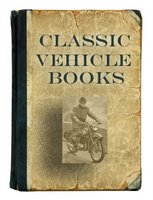Buying A Classic Car
Tips on buying a classic car and what to look out for so you don't get ripped off...
People buy classic cars for a variety of reasons. Some see it as an investment. Buying a classic car has always been a good investment and the recent collapse of the banks and the economy has made them an even better investment. Others buy them because they enjoy wielding spanners on an easy to work on vehicle. Some like to show them or drive them and others still buy them just for the bragging rights. Whatever the reason, anyone who wants to own one is alright in my book.
So let's look at what we can do to help you buy the right vehicle.
When buying a classic car the most important factors that can affect value are:
Provenance - Is it really what it is claimed to be?
Rarity - Obviously a general rule is that the rarer it is, the more it is worth, but there are exceptions to this rule. So do your research properly.
Condition - Some parts are hard to get and some just cant be got and might even have to be made, so consider the cost if you're buying a vehicle that going to need a lot of time, money and effort. Make an assessment of what you think itll cost to do the restoration and then double it at least. Do the same thing for the time you think itll take!
Originality - Check for things such as engine type originality carefully. Ideally, the classic car will have it's original engine and this can be checked with the registration document and usually by a bit of internet research for owners clubs and manufacturers websites. Jeep, for example, allow you to check engine and VIN numbers for originality match and even exact date of manufacture. If the vehicle has had an engine swap but the replacement is of the original type, its not particularly important, (although this might be a bargaining point for you) but if the replacement engine of a non-standard engine, the value of the classic car will be greatly reduced.
Mechanically, there is no end of things that need to be checked and it would take me a year to write and you a year to read about them. Instead, take a look at the automobile inspection sheet below also check the quick tips below and use those things as a guide. If you're not mechanically minded, I'd suggest you find someone who is and ask them to do the inspection for you.
Whatever you buy, don't expect to find a perfect vehicle. Those are very few and far between. Remember any motor vehicle that is the age of the ones we're discussing here is going have some things that either need fixing or can be improved....but that's all part of the fun!
Things to look out for when buying a classic car...
- With the engine cold, use a compression tester to check for even and acceptable compression figures, open the oil filler and run your finger around the inside of the filler tube and as far under the rocker box as possible. Do the same thing with the radiator and radiator cap. In either case, if there's cross contamination between water and oil, you'll find soft, whitish, gunky crud. If you do find this, the engine probably has a faulty head gasket or cracked cylinder head. There are other possibilities, but these are the most likely.
- Assuming it's drivable and road legal, give the car a 30 minute test drive and listen out for odd noises, vibrations, smoke and dodgy handling characteristics. Check for heavy or slipping clutch, crashing gears and loose or clonky steering. Also look out for white or black smoke. White denotes water being burned off in the cylinders and black is burning oil. Neither of which are good news. With the vehicle parked on a flat surface, check it sits straight and square and look out for sagging or leaning.
- Look very carefully along the lines of the car. Be especially wary of wavy paintwork, overly large or small gaps between panels, changes of colour between panels and regularly touch a small magnet onto any panels that might be susceptible to accident damage. If there's filler beneath the paint, the magnet won't stick to the steel. Look under the carpets and around the sill areas especially for rust damage.
- One last thing when buying a classic car...Don't even consider going under the car for a second unless it's completely safe and has adequate axle stands underneath it. NEVER jack a car up and think you're safe and that you don't need those axle stands.
Buying A Classic Car Related Topics
Classic Motorcycle Books
- General Classic Motorcycle Books
- Classic American Bike Books
- Classic Australian Bike Books
- Classic Austrian Bike Books
- Classic British Bike Books
- Classic Czech Bike Books
- Classic German Bike Books
- Classic Italian Bike Books
- Classic New Zealand Bike Books
- Classic Spanish Bike Books
- General Interest Motorcycle Books





